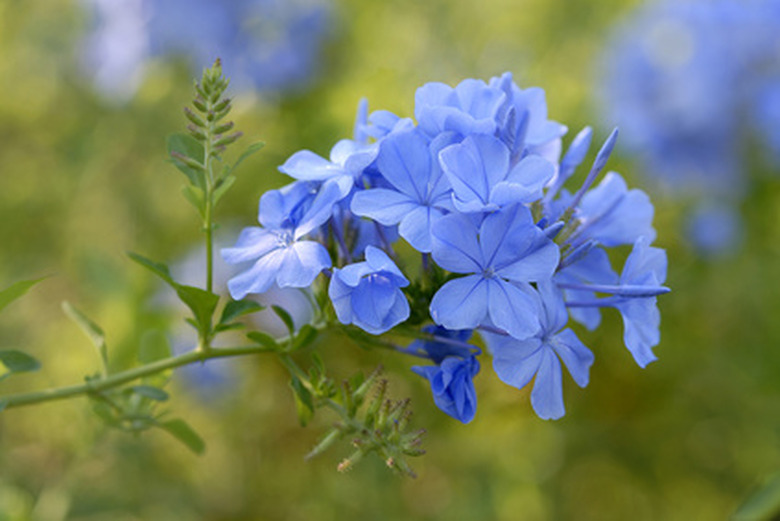Plumbago Plant Care
Plumbago plants are a genus of about 20 species belonging to the leadwort family, known as plumbaginaceae by the Latin name. According to horticulture educator Jennifer Schultz Nelson at the University of Illinois, the name plumbago derives from the Latin word for lead, plumbum, as these plants were thought to cure lead poisoning in times past. Plumbagos originate in locales with warm subtropical climates such as India and South Africa.
Description
Plumbago plants are leafy, flowering perennials with larger varieties developing into woody-stemmed shrubs up to 5 feet in height. Among gardeners, plumbagos are prized for their striking five-petal flowers which can be blue, red or white. The intense indigo blue flowers of plumbago auriculata, or cape leadwort, make it a particularly popular variety. In their native habitat, plumbagos maintain their bright green foliage throughout the year.
- Plumbago plants are a genus of about 20 species belonging to the leadwort family, known as plumbaginaceae by the Latin name.
- The intense indigo blue flowers of plumbago auriculata, or cape leadwort, make it a particularly popular variety.
Habitat
Like most plants native to warmer climates, plumbagos are sun lovers but will tolerate partial shade. They prefer sandy, well-drained soils but are adaptable to less than ideal soil conditions. Once established, plumbago plants are drought resistant and able to withstand dry spells of several weeks. The plants thrive in soil with a slightly acidic pH level. Mulching will help amend the soil pH but definitely do not add lime.
Plant Health
Plumbago plants are adept at obtaining sufficient nutrients from most soils and should not need fertilizing. If the plant is losing color or not blooming well, check the soil pH and amend by mulching as needed. If fertilizer must be applied, use an all-purpose formula sparingly in the spring and early summer as overfertilizing can do more harm than good. Poorly drained plants may also show signs of stress. Add sand to the soil or consider relocating the plant to a better site.
- Like most plants native to warmer climates, plumbagos are sun lovers but will tolerate partial shade.
- Plumbago plants are adept at obtaining sufficient nutrients from most soils and should not need fertilizing.
Pruning
Regular light pruning keeps the plumbago plant from becoming unruly and will actually lead to more vigorous growth. Since they take well to pruning, plumbagos can be used as hedging plants. For free-standing shrubs, remove any interior dead wood to allow the plant to focus growing energy to the outer foliage and flowers. Spent flowers should also be trimmed back as this will encourage the plant to produce new blooms.
Pests and Diseases
Plumbago plants can be susceptible to damage caused by mites and cottony cushion scale insects. These are best treated by spraying with horticultural oils or soaps diluted with water. Cassius blue butterflies like to lay eggs on plumbago plants and their larvae will eat the foliage. If the leaves show signs of damage, examine the plant closely for caterpillars. The caterpillars are usually green and can be removed by hand or by hosing with water.
- Regular light pruning keeps the plumbago plant from becoming unruly and will actually lead to more vigorous growth.
- Since they take well to pruning, plumbagos can be used as hedging plants.
